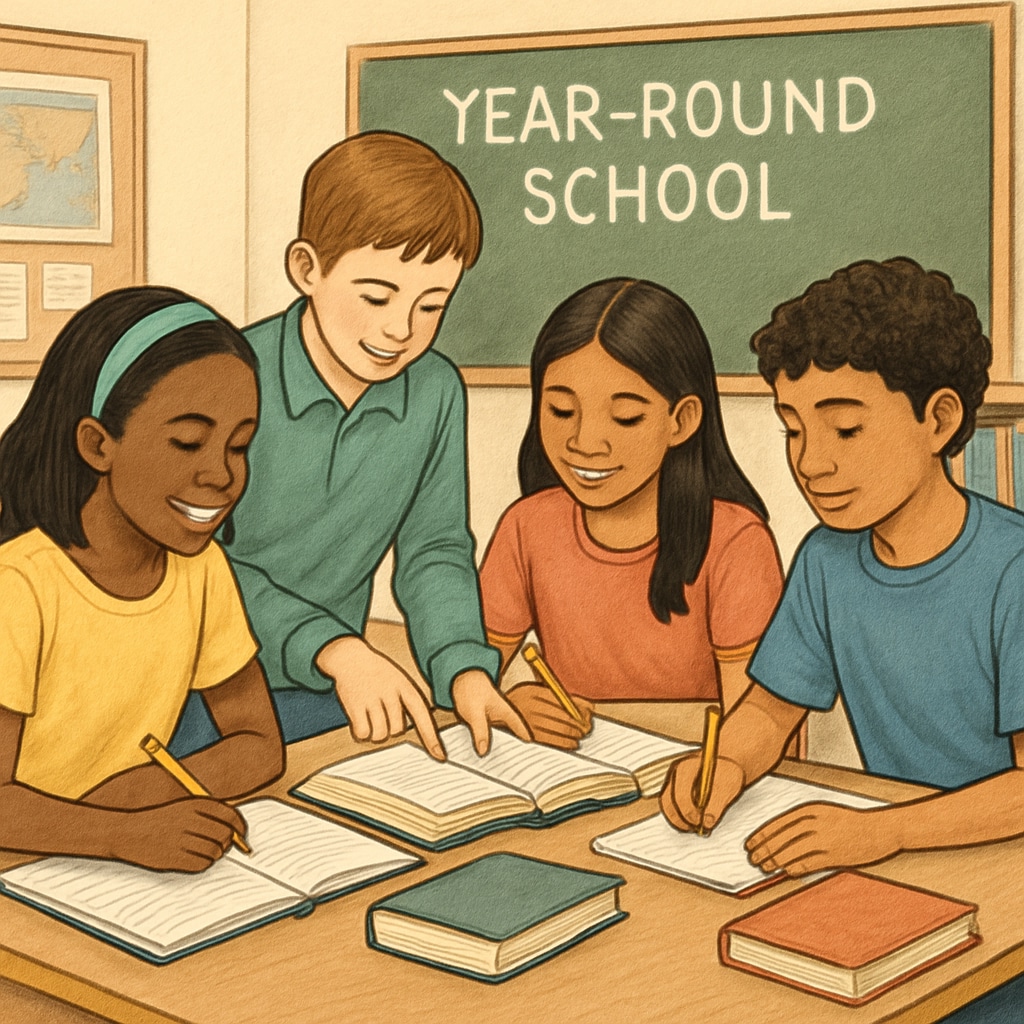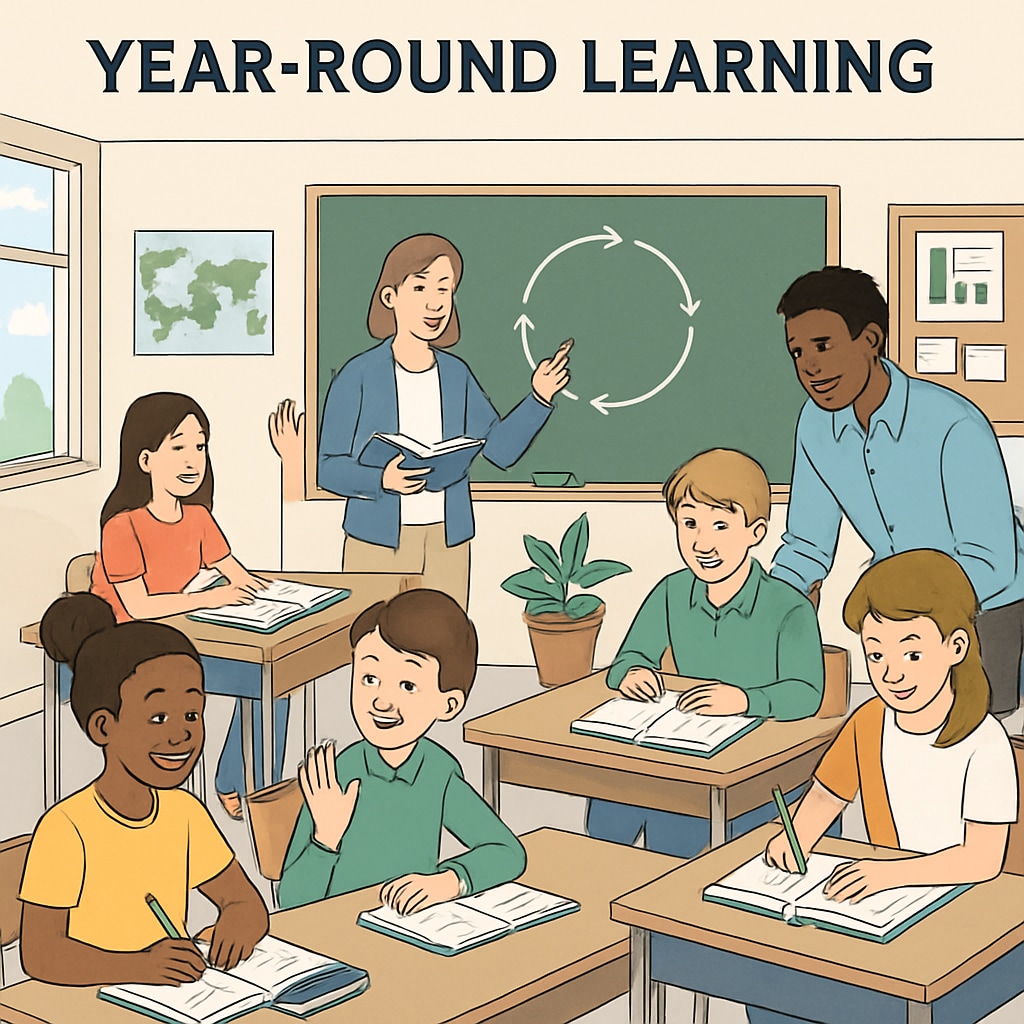Year-round education has gained traction as an alternative to traditional school calendars, particularly for addressing knowledge retention challenges among K12 students. The conventional system, which includes a long summer break, often leads to significant “summer learning loss,” where students forget much of what they learned during the previous school year. This article examines the drawbacks of the traditional model and explores how year-round school schedules, such as “one week on, one week off,” can reduce knowledge loss while balancing academic rigor and rest.
The Problem with Long Summer Breaks
Traditional school calendars, with their extended summer vacations, were originally designed for a different era—one where agricultural schedules dictated family life. However, modern studies indicate that these long breaks hinder academic progress. According to research published by the National Summer Learning Association, students can lose approximately two to three months of learning in subjects like math and reading over the summer. This phenomenon disproportionately affects students from lower-income families, who may lack access to enrichment opportunities during the break.
Furthermore, teachers often spend the first few weeks of a new school year reteaching material that was forgotten during the summer. This cycle wastes valuable instructional time and perpetuates a system that prioritizes tradition over efficiency.

Year-Round Education: A Balanced Alternative
Year-round education reorganizes the academic calendar to include shorter, more frequent breaks throughout the year. One innovative approach is the “one week on, one week off” model, which divides the year into alternating instructional and rest periods. This structure aims to provide consistent opportunities for knowledge reinforcement while preventing burnout.
Key benefits of this model include:
- Continuous Learning: Shorter gaps between instructional periods reduce the risk of knowledge attrition.
- Improved Well-Being: Regular breaks allow students and teachers to recharge, fostering better mental health and engagement.
- Equity in Education: Students from all socioeconomic backgrounds have equal opportunities to retain knowledge, as long breaks no longer disproportionately affect those without access to summer resources.
Educational systems in countries like Australia and Japan have adopted variations of year-round calendars, demonstrating their effectiveness in maintaining academic progress and reducing teacher workload. For more information on global education systems, visit Britannica’s Education Overview.

Challenges and Implementation Considerations
While the benefits of year-round education are clear, transitioning to this system requires careful planning. Some challenges include:
- Community Resistance: Parents and educators accustomed to traditional schedules may initially resist change.
- Extracurricular Activities: Sports and summer camps may need to adjust their schedules to align with new school calendars.
- Administrative Costs: Implementing year-round education may require additional resources for staffing and facility maintenance.
However, these challenges can be mitigated with transparent communication and gradual implementation. Pilot programs can help schools test the model and gather feedback from stakeholders, ensuring a smoother transition.
Conclusion: A Step Toward Educational Equity
Year-round education offers a promising solution to the limitations of traditional school calendars. By addressing summer learning loss and promoting consistent engagement, this approach enhances knowledge retention and supports student success. As education systems continue to evolve, adopting innovative models like “one week on, one week off” can bridge gaps in learning and create a more equitable future for all students.
The shift to year-round education may require adjustments, but its potential to improve academic outcomes and well-being makes it a worthwhile endeavor. As schools and policymakers weigh the benefits and challenges, one thing is clear: reimagining the academic calendar could be the key to unlocking every student’s full potential.
Readability guidance: This article uses concise paragraphs, active voice, and frequent transitions to ensure clarity. Lists summarize key points for easy comprehension, while external links provide additional context.


